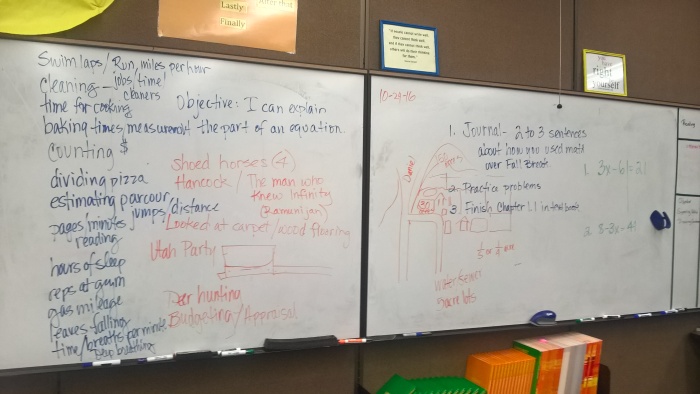Have you seen the following picture floating around social media this week?

It seems to be going faster than hot cakes, shaking up the internet. (See what I did there?) Apparently the fast food aspect makes math much more edible!
You may want to try it and write down your answer before you read any further. Spoilers below!
(This space purposefully left blank)
When I first saw it, of course I was super happy to jump in, being a math guy and all. I did some quick calculations in my head and confidently verbalized my answer to the screen… 17!
Then I saw that someone had already posted 17 and been told they were wrong. Phew! Good thing I didn’t memorialize my mistake online yet! I looked a little more closely, saw that pesky multiplication sign on the last row (which I had just assumed was a plus sign before), and recalculated. The answer this time… 25! Sweet!
Except it wasn’t. I was wrong again. can you see my mistake? For the second time, I didn’t look closely enough. In the second row, we see that the fries are each worth 2, but in the last row there is only one box, meaning that it only equals 1.
Correct answer… 15. Really.
Yes, I did post that it took me three tries. Remember I told you a few weeks ago we all should be okay with making mistakes because they were a growth opportunity?
I used this picture at a training with teachers this past week. They made some of the same mistakes I did, and some different ones as well. To me, that was the point: to show that we all can learn to look at things differently, grow from mistakes, and learn a conceptual understanding. The experience was a great and exciting object lesson. It was fascinating to me to watch their thought process.
It was also interesting to read hundreds on comments by people online about the picture. Some had the right answer; most did not. Some tried to learn; others tried to minimize or blame. Here are some that caught my attention:
- “And this is why I failed math”
- “Apparently I’m old and didn’t realize that no matter where in the equation multiplication is before addition so the answer is 15“
- “Now let’s just have a honest moment… who asked a kid for help????“
- “Well seri says it’s 25. So I suppose I need to learn math lol”
- “Looks like they are fineally preparing kids for a job at McDonalds after they receive a college education
 “
“ - “everyone is saying that it’s 15 even doing pemdas it doesn’t work out to 15 to me. help me out what am I missing?“
- “my kids told me not to help them with math anymore”
- “definitely common core”
- “This is dumb. Who decided an order of operation? If you say it aloud from left to right its first 5+1 (6) then x 10 (60).“
- “Ha, yes now I see it! That is tricky for sure!“
I don’t post any of these to fault or make fun. I share them because they help reveal where our culture stands. I love the ones that show interest and a desire to learn and be challenged. I am saddened by the ones that attack math or downplay effort.
Take and use this in your classes and in your homes for a fun activity and a great discussion. You can use it as is, or you can change the numbers to match the level of math skill the student or adult is at. You can even go to the restaurant and try it out for hands-on practice and a treat! But whatever you do, don’t let people perpetuate negative beliefs about math or themselves as they attempt it.
~~Remember, math skills won’t improve until math attitudes do!~~~
We can make a difference. We have to make a difference. It might be in our family, it might be in our students, it might be in our community, and it might even be in ourselves.
Here’s to our efforts!
Cheers,
Adam
__________________
Be a friend and follow me!
WordPress: https://changingmathattitudes.wordpress.com/
Facebook: https://www.facebook.com/groups/1653035008300751/
Help me out! Try this out and let me know your experience!





